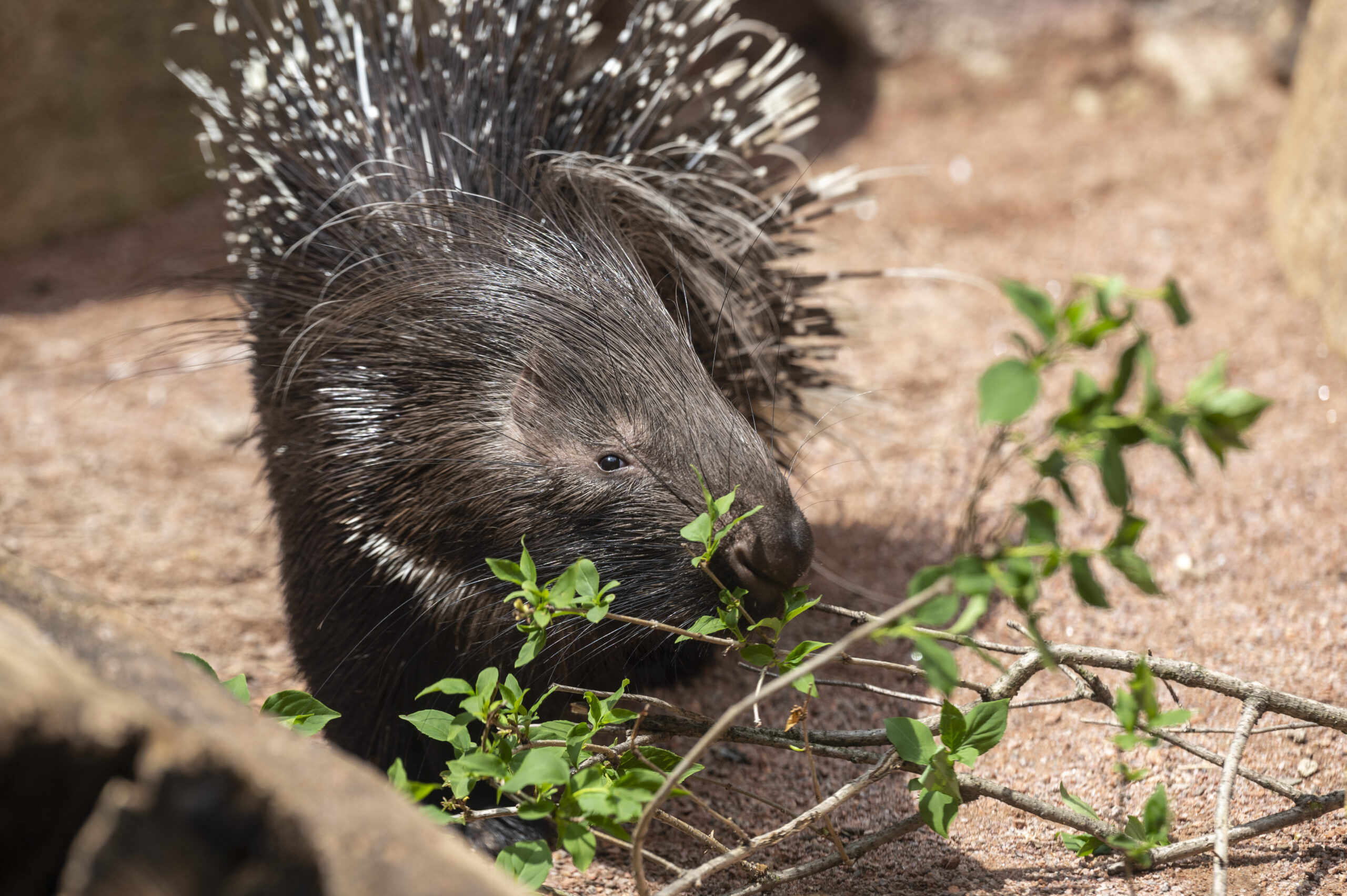I LIVE IN AFRICA
Cape porcupines can be found throughout central and southern Africa. They spend their day among the rocky kopjes, rock formations in the Serengeti, and will take shelter in abandoned burrows or excavate ones themselves.
I AM A SCAVENGER
Cape porcupines typically eat fruit, roots, bark, and have been known to eat bones and carrion. To help them break down food, they have strong font teeth that never stop growing. Chewing on hard items helps keep their powerful teeth healthy and filed down.
CAPE PORCUPINES ARE SOLITARY
Cape porcupines are solitary animals, but will sometimes live in small family groups. This animal species is monogamous and will spend their life with their mate and offspring.
COVERED IN QUILLS
All porcupines, big and small, have the same average number of quills at 30,000. Porcupine quills are made out of the same material as our hair, and similar to our hair, their quills also fall out and grow back. Contrary to popular belief, porcupines do not shoot out quills. Instead, when feeling threatened, their first instinct is to freeze and then make themselves big, turn backward, and run into the predator.
HELPING THE CAPE PORCUPINE IN THE WILD
The cape porcupines at the Fort Wayne Children’s Zoo are enrolled in the Species Survival Plan (SSP). SSP is a program implemented by the Association of Zoos and Aquariums (AZA) to help ensure a genetically viable population exists.
I AM IMPORTANT TO MY ECOSYSTEM
Cape porcupines play a positive role in their ecosystem by their foraging and turning soil. Their foraging contributes to the maintenance of the plants and their foraging habits open up soil surfaces, which allows water to seep into the ground to promote new growth.

